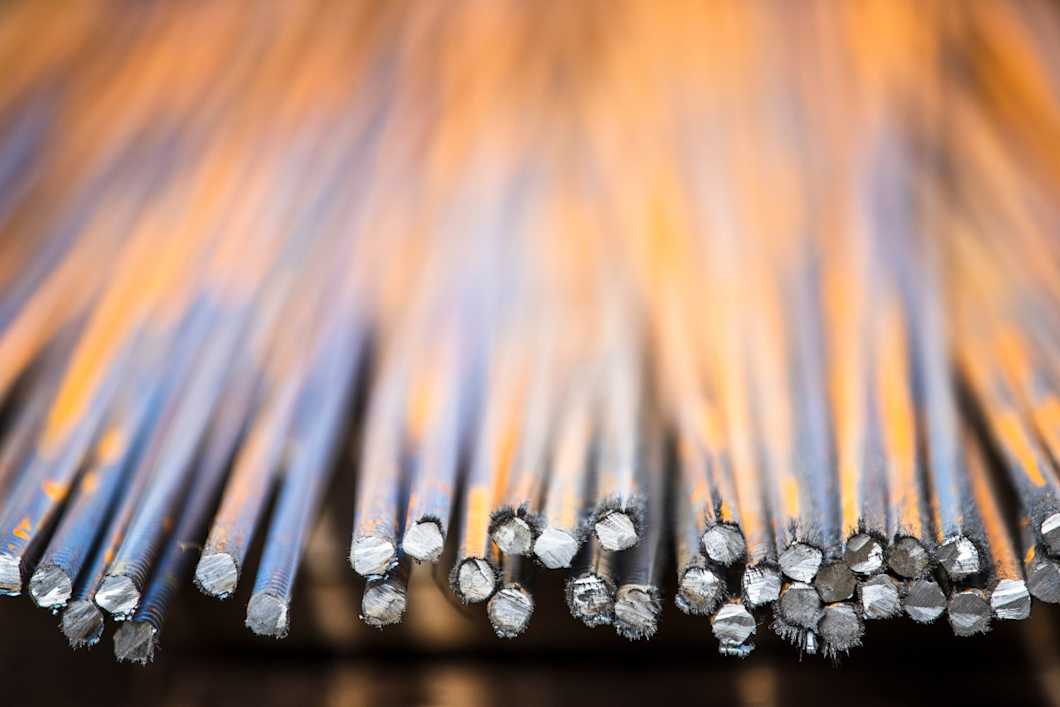Dilatometry
Dilatometry is an analytical method that is used to measure the thermal characteristics, such as volume changes and phase transitions, of solid materials.

- Fast turnaround times
- Personal service from method experts
- Competitive prices
- Result accuracy guarantee
What is dilatometry used for?
Dilatometry can measure material properties, such as the thermal expansion coefficient and glass transition temperature. The method can also give valuable information about phase changes and chemical reactions within a sample if they are accompanied by a change in density.
Typical samples for dilatometry include metals, ceramics, polymers, and composites. This wide range of sample variety allows the method to be used in the research and quality control of semiconductors, plastics, and construction materials, among others.
Presently, the most common application of dilatometry is measuring the coefficient of linear thermal expansion (CTLE, α) of metals and other solid materials (ASTM E228) or plastics (ASTM D696). However, other important information about a material's morphology can also be obtained using dilatometry measurements. These include the densification and sintering behavior of ceramics and temperatures at which phase transitions occur in metal alloys.
Dilatometry has been used in the past to measure the glass transition temperature. Nowadays, glass transitions are usually analyzed using more accurate thermal analysis methods, such as thermomechanical analysis (TMA) and differential scanning calorimetry (DSC), which have become more accessible.
How does dilatometry work?
There are two main types of dilatometry; push-rod dilatometry and optical dilatometry. The measurement technique is different between the two, but they fundamentally operate in the same manner. An external heat source is applied to a sample, and as the temperature increases, the physical changes experienced by the sample (volume, length, density, and phase changes) are recorded.
Push rod dilatometer vs. optical dilatometer
In push-rod dilatometry, the sample is in contact with a rod, which in turn connects to a strain gauge. As the sample is heated, it expands and applies a force to the rod from which the strain is recorded. This method is highly accurate when analyzing hard solids like metals and ceramics, and can measure CTLE values down to 10 nm/m*°C. Softer materials such as plastics can be measured by this method if their CTLE is greater than 1 µm/m*°C.
Optical dilatometry uses a non-contact detection method in which a digital camera captures the microscopic changes in sample dimensions as it is heated. This method is advantageous as it can be used on softer, more ductile materials like polymers, as well as fragile crystals, thin films, and organic matter. It is accurate for materials with a CTLE greater than 1 µm/m*°C. Optical dilatometry can also be applied to the study of molten materials on a given substrate using the Sessile drop technique. These experiments allow for the determination of interfacial properties, such as contact angle or surface tension at extremely high temperatures.
Need thermal analysis services?
Measurlabs offers coefficient of thermal expansion measurements and additional thermal analyses using dilatometry and several additional techniques. Available methods include thermomechanical analysis (TMA), differential scanning calorimetry (DSC), and thermogravimetric analysis, among others. Whether it’s just a dozen of samples or a large series, we offer competitive pricing and deliver reliable results quickly. Contact us through the form below to request a quote and start the discussion with our testing experts.
Suitable sample matrices
- Metals
- Ceramics
- Polymers (CTE > 1 µm/m*°C)
- Other solid materials
Ideal uses of dilatometry
- Measuring thermal expansion coefficients
- Recording phase transitions
- Monitoring density changes
Ask for an offer
Fill in the form, and we'll reply in one business day.
Have questions or need help? Email us at info@measurlabs.com or call our sales team.
Frequently asked questions
Dilatometry is used to measure thermal expansion, phase transitions, and other changes that occur when a material is heated or cooled.
Measurlabs offers a variety of laboratory analyses for product developers and quality managers. We perform some of the analyses in our own lab, but mostly we outsource them to carefully selected partner laboratories. This way we can send each sample to the lab that is best suited for the purpose, and offer high-quality analyses with more than a thousand different methods to our clients.
When you contact us through our contact form or by email, one of our specialists will take ownership of your case and answer your query. You get an offer with all the necessary details about the analysis, and can send your samples to the indicated address. We will then take care of sending your samples to the correct laboratories and write a clear report on the results for you.
Samples are usually delivered to our laboratory via courier. Contact us for further details before sending samples.